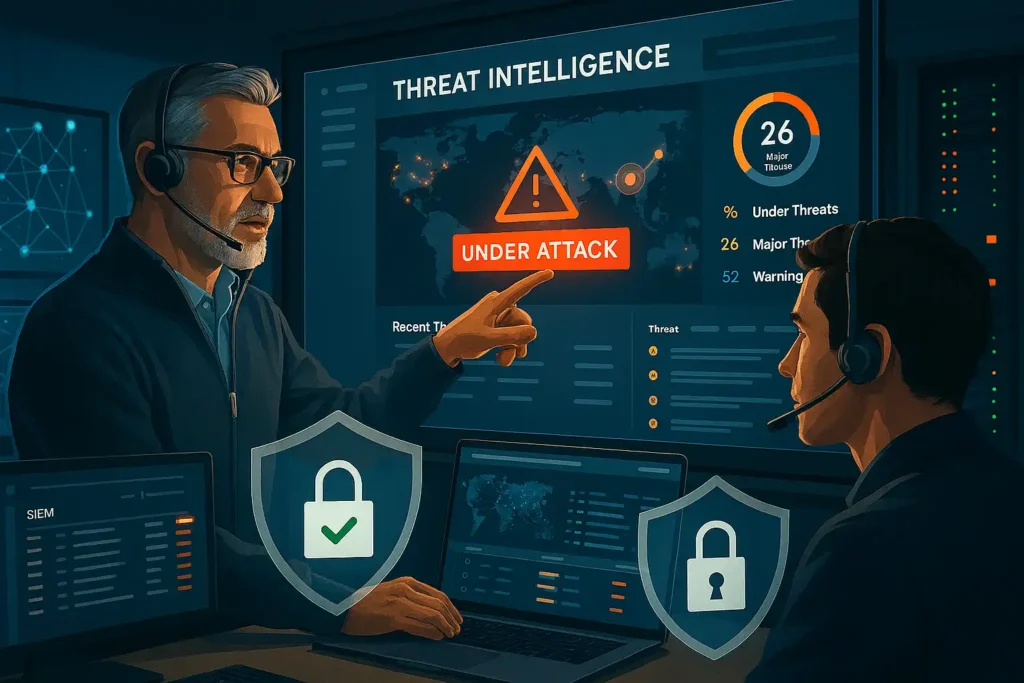Breaking: The cybersecurity skills shortage now exceeds 4 million professionals globally. Without effective mentoring, critical roles remain unfilled, and security teams struggle to scale.
Advisory released: Structured mentorship is no longer optional — it’s a strategic imperative. Organizations with formal programs report 35% higher retention among junior staff. Here’s how to build a culture of continuous learning and hands-on growth.

Who Needs Mentoring in Security?
Junior security staff often join with theoretical knowledge but limited practical experience. They understand concepts like firewalls, intrusion detection, or encryption — but may lack context for real-world threats.
In practice, they need guidance in:
- Triage and investigation
- Tool configuration and automation
- Incident response protocols
- Communicating risk to non-technical stakeholders
Without mentorship, new analysts burn out or miss critical alerts. Therefore, investing in mentorship directly strengthens security posture.
A Framework for Effective Mentorship
1. Structured Onboarding
Assign each junior analyst a senior mentor for their first 90 days. Define clear goals: master the SIEM, execute a mock incident response, and shadow real investigations.
Example schedule:
- Week 1–2: Tool immersion and log analysis
- Week 3–4: Mock phishing and malware scenarios
- Week 5–8: Live monitoring with debriefs
- Week 9–12: Lead a small incident under supervision
2. Regular Threat Briefings
Include junior staff in threat intelligence meetings. Review recent CVEs, threat actor TTPs, and industry advisories. Encourage questions — even basic ones.
This builds pattern recognition and critical thinking. For instance, discuss how CVE-2025-1234 impacts your specific infrastructure.
3. Hands-On Labs
Create a sandboxed environment for practice. Use platforms like LetsDefend or Blue Team Labs Online. Let juniors analyze malware samples, write YARA rules, and practice forensics.
Labs build confidence and reduce the fear of mistakes.
Measuring Mentorship Success
Track both qualitative and quantitative metrics:
- Time to autonomy: How quickly can juniors handle Tier 1 alerts alone?
- Retention rates: Are mentees staying longer?
- Skills progression: Use regular assessments (e.g., MITRE ATT&CK evaluations)
- Feedback loops: Conduct bi-weekly one-on-ones to adjust the program
Organizations like IBM and Cisco report mentored analysts achieve proficiency 50% faster.
Avoid These Common Mistakes
- Overloading with theory: Focus on applied learning.
- Ignoring soft skills: Juniors must learn to document and present findings.
- No clear escalation paths: Ensure mentees know when and how to ask for help.
In practice, the best programs balance support and independence.
Conclusion: Build a Mentoring Culture
Cybersecurity teams face relentless threats. Mentoring isn’t a nice-to-have — it’s a force multiplier. Start small, document processes, and iterate based on feedback.
Apply these strategies now. Review your current onboarding, assign mentors, and measure progress. Share results with other teams to raise industry standards.
Subscribe to advisories like CISA’s alerts and NIST frameworks for ongoing guidance.
FAQ
What are the key traits of a good cybersecurity mentor?
A good mentor balances technical expertise with empathy. They provide clear feedback, encourage questions, and share real-world stories. They also stay updated on threats and tools.
How long should a mentorship last?
Most programs run 3–6 months, but ongoing check-ins are valuable. Some organizations use “mentor for a quarter, peer for life” models.
What if we’re a small team with limited senior staff?
Leverage external resources. Encourage juniors to join communities like SANS Cyber Aces, attend webinars, or participate in CTF competitions. Even part-time mentorship helps.
How do you handle mentees who aren’t progressing?
Address gaps early. Is it a knowledge issue, motivation, or poor fit? Provide additional resources or adjust their role. Not everyone thrives in high-pressure ops environments.
Can mentorship reduce security risks?
Yes. Mentored staff make fewer errors, detect threats faster, and follow protocols more consistently. This directly reduces incident response times and potential breaches.
Should mentors be formally trained?
Ideal mentors receive training in coaching techniques. However, passion and patience matter most. Provide mentors with guidelines and support — don’t assume they’re naturally great teachers.
No post found!

